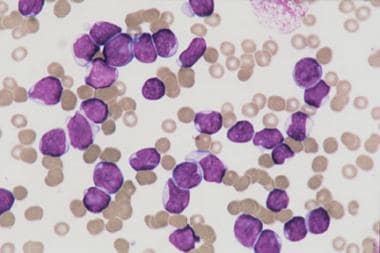London, (Parliament Politics Magazine) -The symptoms of acute lymphoblastic leukaemia (ALL) can develop rapidly, and in many cases need treatment as soon as possible. It can occur at any age, though it affects younger people and children more frequently. Men are more likely to develop this disease than women. Listed below are some signs and symptoms of ALL. Getting a diagnosis is crucial to ensuring a successful outcome.
Symptoms of acute lymphoblastic leukaemia can range in severity, but they usually start slow. The disease progresses quickly as the number of immature white blood cells increases. Therefore, it is important to see your doctor as soon as you begin to experience these symptoms. In addition, your doctor may recommend blood transfusions, a process that may be necessary if you have low levels of healthy blood cells.
The first step in treatment is HLA typing. This procedure will identify a potential stem cell donor by comparing the proteins in the child’s blood cells with those of the potential donor. The higher the HLA markers, the higher the chances of a successful transplant. The second step in the treatment process involves a small amount of cerebrospinal fluid, which surrounds the brain and spinal cord. The fluid is then checked for cancer cells.
The next step is finding out if there is an infection or other risk factor that could be causing the leukaemia to develop. While environmental factors are not believed to play a role in developing leukaemia, exposure to radiation or certain bacteria can increase the risk of infection. If you suspect you have the disease, your doctor may suggest some tests to rule out other possible risks or treatments.
The disease develops rapidly and patients can feel unwell for days or weeks before their diagnosis. The symptoms of acute lymphoblastic leukaemia include persistent tiredness, dizziness, paleness, and shortness of breath when performing physical activities. The marrow can become overcrowded and result in pain in the bones and joints. In severe cases, a patient may experience abdominal discomfort, and may need surgery to remove the disease.
Acute lymphoblastic leukaemic leukemia affects the body’s white blood cells. These cells fight infection and protect the body from disease. However, in patients with ALL, there are too many immature white blood cells in the bone marrow, making it difficult for the body to fight off infections. The increased number of white blood cells, or lymphocytes, will cause problems in the body. These abnormal white blood-cells will then build up in the liver, spleen, and other organs.
Acute lymphoblastic leukaemic leukaemia is a type of blood cancer that affects the bone marrow. Symptoms of this disease include an abnormal increase in white blood cells. The bone marrow also produces platelets and red blood cells. These types of cells are known as blast cells. While they are not harmful, they can spill out of the bloodstream and accumulate in other parts of the body.
Anemia is a common side effect of acute lymphoblastic leukaemia. In children, the disease typically causes anemia and can affect the spinal cord. Anemia is a symptom of ALL and may be difficult to detect in a child. Fortunately, all symptoms of the disease are treatable. The patient will receive a diagnosis of acute lymphoblastic leukaemic or ALL in the next few months.
The most common symptoms of acute lymphoblastic leukaemia are fatigue and anemia. The disease can affect platelets, red blood cells, and platelets. People with this condition may also experience other symptoms, including anemia and bruising. While there is no definitive cause of the disease, it should be treated as soon as possible and followed closely by proper medication.
Children with acute lymphoblastic leukemia should be seen by a doctor. They should be evaluated by a pediatrician. Acute lymphoblastic leukemia can also be referred to a cancer center to be treated with a multi-phased regimen. In addition to these, therapy directed towards the central nervous system should be included in the treatment.


